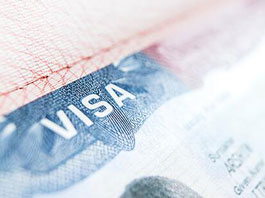Download Free Common U.S. Immigration Forms
Most immigration and naturalization forms can be downloaded for free from the U.S. Citizenship and Immigration Services. If you're applying from outside the United States, however, some forms will be available only through the U.S. Department of State's online portal.
Immigration Resources
Resources on this page include a wide range of downloadable tools and instructions , from U.S. Citizenship and Immigration Services and other non-profit websites.

Find USCIS Office
Find a field office, international office, or asylum office, and learn about office closures.
Read More
Military Naturalization
Find information and resources about naturalization through military service, citizenship ...
Read More
Family
Learn how U.S. immigration law applies to families of U.S. citizens, of refugees and ....
Read More
Scams and Fraud
Use this section to report immigration fraud, access the USCIS Tip Form, and learn ...
Read More
Adoption
Find information about the inter country adoption process, background checks, visa types ...
Read More
Working in the U.S.
Many aliens want to come to the United States to work. This page provides a summary of ...
Read More
Visit the U.S.
If you want to visit (and not live in) the United States, you must first obtain a visitor visa.
Read More
Find USCIS Office
Find a field office, international office, or asylum office, and learn about office closures.
Read More
Military Naturalization
Find information and resources about naturalization through military service, citizenship ...
Read More
Family
Learn how U.S. immigration law applies to families of U.S. citizens, of refugees and ....
Read More
Scams and Fraud
Use this section to report immigration fraud, access the USCIS Tip Form, and learn ...
Read More
Adoption
Find information about the inter country adoption process, background checks, visa types ...
Read More
Working in the U.S.
Many aliens want to come to the United States to work. This page provides a summary of ...
Read More
Visit the U.S.
If you want to visit (and not live in) the United States, you must first obtain a visitor visa.
Read More
Find USCIS Office
Find a field office, international office, or asylum office, and learn about office closures.
Read MoreHave Questions About Forms?
Search all USCIS forms. File your form online for a more convenient and secure experience. For forms available only in paper, select the Form Details button to download the form and instructions. USCIS forms and USCIS online accounts are always free.
If you are a victim of domestic violence, trafficking, or other crimes, or if you previously filed an I-751 abuse waiver, please use the address in the corresponding section on our Change of Address webpage. Otherwise, see Form AR-11 for the mailing address. Do not submit other forms or fees to this address.
Don’t forget to sign your form! USCIS will reject any unsigned form.
Your status determines which relatives (or future relatives) may be eligible to receive immigration benefits. In order to help a family member immigrate, you must be a: a) U.S. citizen b) Green Card holder (permanent resident) c) Refugee admitted as a refugee within the past 2 years or asylee granted asylum within the past 2 years
You may be eligible to bring your fiancé(e) to the United States on a fiancé(e) visa if you meet the following requirements:
You are a U.S. citizen;
You and your fiancé(e) intend to marry one another within 90 days of your fiancé(e)’s admission to the United States on a K-1 nonimmigrant visa;
You and your fiancé(e) are both legally free to marry (this means you both are legally able to marry in the United States and any previous marriages have been legally terminated by divorce, death, or annulment); and
You and your fiancé(e) met each other in person at least once within the 2-year period before you file your petition. You may request a waiver of this in-person meeting requirement if you can show that meeting in person would: a) Violate strict and long-established customs of your fiancé(e)’s foreign culture or social practice; or b) Result in extreme hardship to you, the U.S. citizen petitioner.
Generally, a citizen of a foreign country who wishes to enter the United States must first obtain a visa, either a nonimmigrant visa for temporary stay, or an immigrant visa for permanent residence. You must have a student visa to study in the United States. Your course of study and the type of school you plan to attend determine whether you need an F visa or an M visa. for more info click here
Visitor visas are nonimmigrant visas for persons who want to enter the United States temporarily for business (visa category B-1), for tourism (visa category B-2), or for a combination of both purposes (B-1/B-2).
1)Complete the online visa application and 2) print the application form confirmation page to bring to your interview.
You will upload your photo while completing the online Form DS-160. read more
